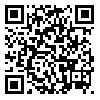Volume 27, Issue 2 (2020)
EIJH 2020, 27(2): 1-12 |
Back to browse issues page
Download citation:
BibTeX | RIS | EndNote | Medlars | ProCite | Reference Manager | RefWorks
Send citation to:



BibTeX | RIS | EndNote | Medlars | ProCite | Reference Manager | RefWorks
Send citation to:
Yousefifar S, Jangjou Gholenji S. Change in the Traditional Pattern of Tehran Women Outerwear Since the Constitutional Period to Reza Shah Period. EIJH 2020; 27 (2) :1-12
URL: http://eijh.modares.ac.ir/article-27-39071-en.html
URL: http://eijh.modares.ac.ir/article-27-39071-en.html
1- Professor of Iranian History, Faculty of History, Tehran University , shyousefifar@ut.ac.ir
2- Assistant Professor of Iranian History, Faculty Member of Encyclopedia of World of Islam
2- Assistant Professor of Iranian History, Faculty Member of Encyclopedia of World of Islam
Abstract: (2925 Views)
Until the Naserid period, Iranian women clothing was different in and out of the home and was directly influenced by the common moral pattern. Changes in common patterns emerged from Iranians' familiarity with the manner of social presence as well as male and female clothing in the public sphere of western society, from the Naserid period onwards, and has had various effects over time. This process is examined in the present article to answer this question: Between which strata of society and regions of Iran did the change in the style of women's clothing during the period in question occur, and what social and cultural contexts were most effective in this regard? Based on the results of this study, it can be said that due to the increasing social presence of women, the process of fitting their clothing with the requirements of new social relations was within the framework of the ethical order and living patterns of Iranian women. But what happened later in the process of policy-making and implementation of socio-cultural programs by the government has caused ambiguity and numerous damages to this process.
Keywords: Women's Outerwear, Iranian Women's Clothing, Cultural Changes, Picheh, Rubandeh, Women's Shoes
Article Type: Original Research |
Subject:
Arts and Humanities (General)
Received: 2019/12/16 | Accepted: 2020/03/17 | Published: 2020/03/17
Received: 2019/12/16 | Accepted: 2020/03/17 | Published: 2020/03/17
Send email to the article author
| Rights and permissions | |
 |
This work is licensed under a Creative Commons Attribution-NonCommercial 4.0 International License. |







